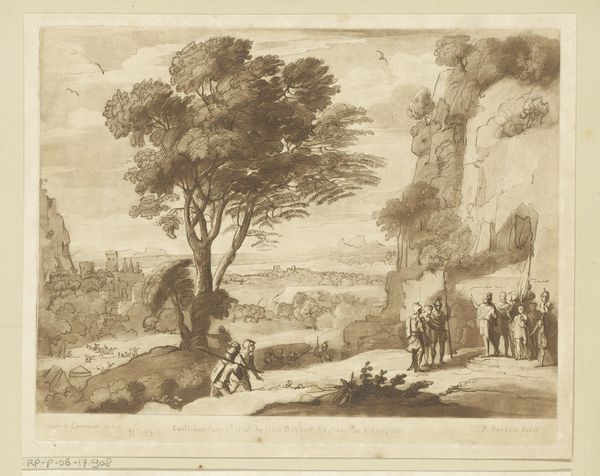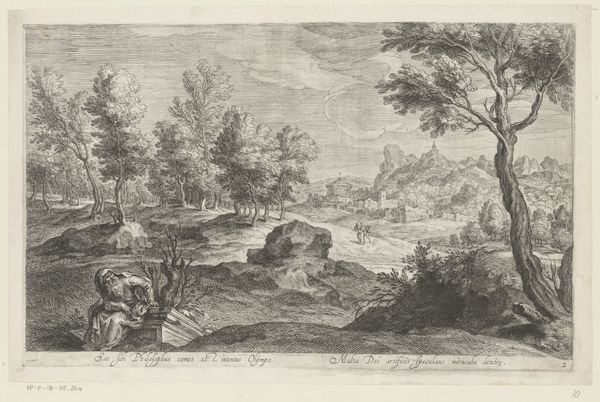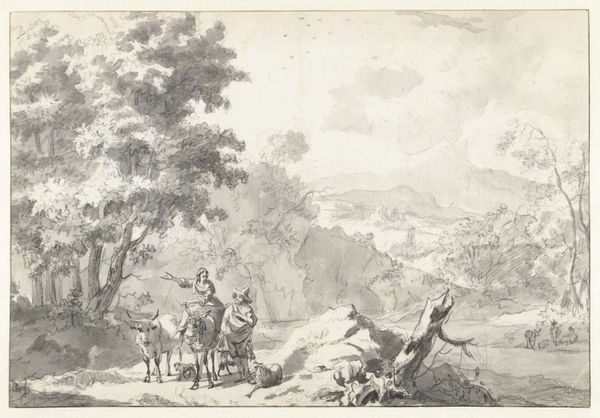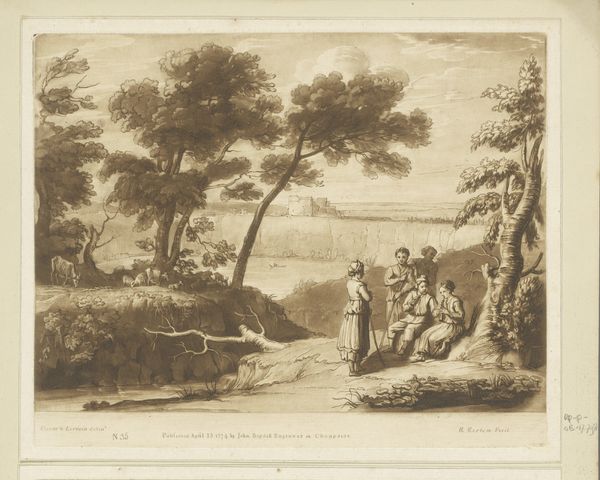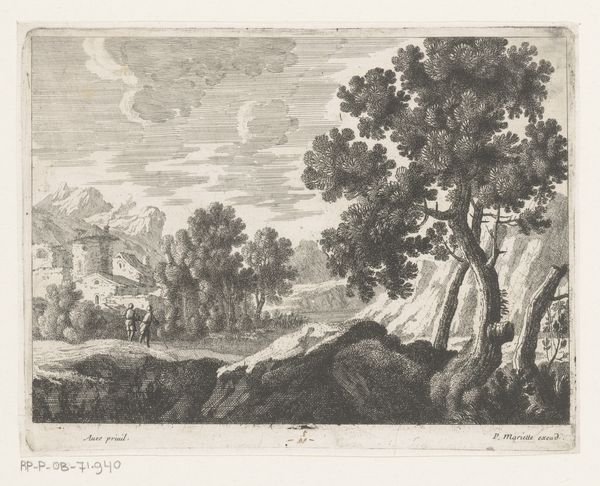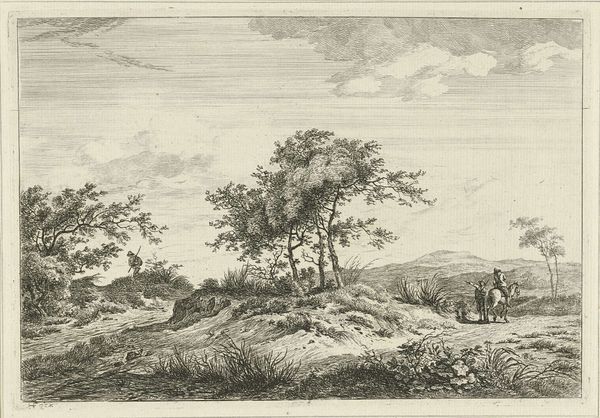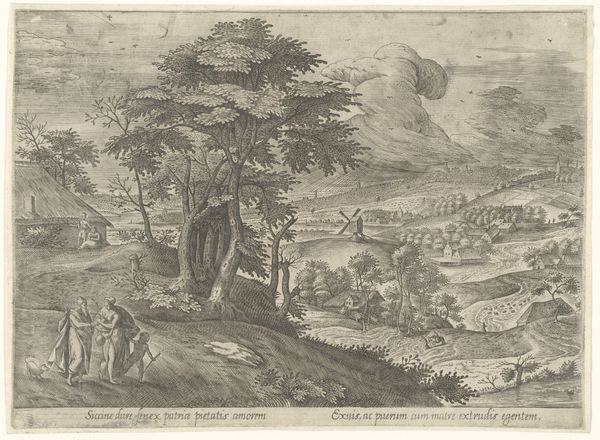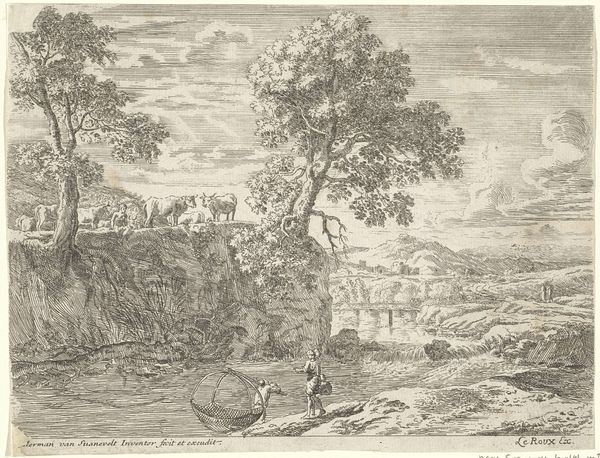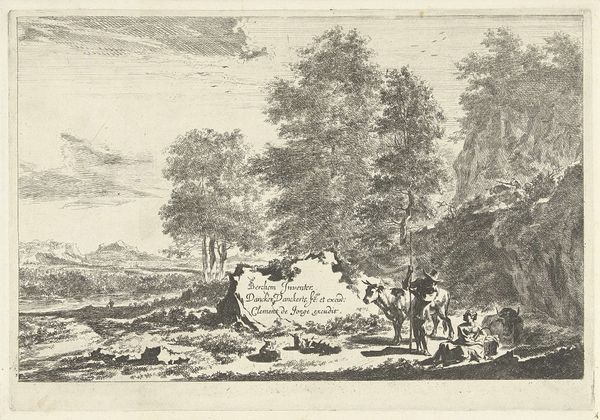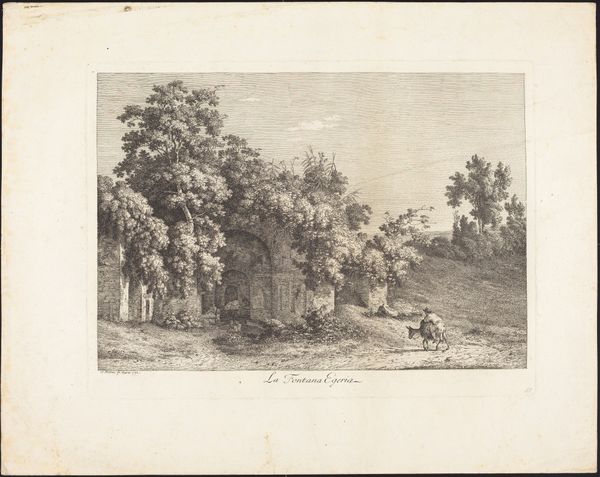
engraving
#
baroque
#
dog
#
landscape
#
genre-painting
#
history-painting
#
engraving
Dimensions: height 206 mm, width 269 mm
Copyright: Rijks Museum: Open Domain
Editor: This engraving, "Landschap met reizigers en herders" or "Landscape with travelers and shepherds" by Jan Lauwryn Krafft, likely created between 1704 and 1765, possesses a rather tranquil and picturesque quality, almost like a stage set with figures frozen in mid-action. What social narratives do you find embedded within this seemingly simple landscape? Curator: That's a keen observation. The "simplicity" you perceive masks complex power dynamics. Baroque landscapes, especially those with genre scenes, often reinforced existing social hierarchies. Consider the travelers and shepherds: Who holds mobility, and who is tied to the land? Krafft positions them deliberately, possibly reflecting the era’s unequal access to resources and the increasing stratification of rural society. What can we read, for instance, in the shepherd's proximity to the natural landscape? Editor: I hadn’t thought of it in terms of power. So, the shepherd’s connection to nature might not be a romantic ideal, but an indication of their socio-economic limitations? The dog almost seems to emphasize his social status too. Curator: Precisely. The dog isn't just a charming detail, it’s a symbol of labor and dependence, intrinsically tied to the shepherd’s role. Moreover, landscapes of this period were rarely just depictions of nature. They were often veiled commentaries on land ownership, labor, and control. It subtly naturalizes these hierarchies, rendering them seemingly immutable. Do you think that by immortalizing scenes such as this one that Krafft somehow gives it new context in time? Editor: That’s a really important point about the subtle normalization of inequalities through art! I now notice the stark contrast between the figures engaged in daily life, versus that building in the distance. Almost two completely different worlds that remain disconnected. Thanks for providing some context on what is really going on within the piece. Curator: Of course. It highlights the powerful way that even seemingly peaceful artwork is deeply entwined with broader power structures and social commentaries. Recognizing these intersections allows us a richer understanding of history as depicted through art.
Comments
No comments
Be the first to comment and join the conversation on the ultimate creative platform.
